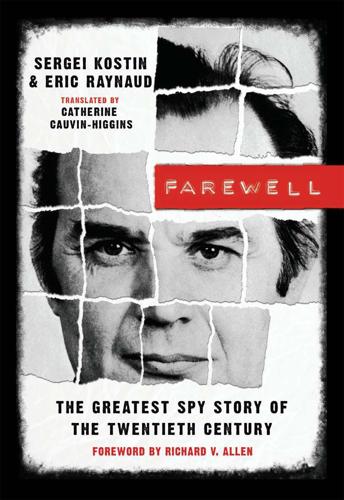
Farewell
by
Sergei Kostin
and
Eric Raynaud
Published 14 Apr 2011
The target of his revenge was the KGB, but we have to admit that he committed to it with such a destructive determination and passion that it shook the entire edifice. Among the American protagonists who had developed the “take-down strategy” toward the Soviet Union, many had access to the Farewell documents, but very few had heard of Vladimir Vetrov, let alone of the French connection at the source of those documents. This makes it difficult to assess accurately the impact of the Farewell dossier on the end of the Cold War. There is enough material available, however, for deductive reasoning and clue analysis. We saw in chapter 28 that the NSC directive NSDD 75 was used as a road map for strangling the Soviet economy.
…
Sometimes, in the excitement of the interviews, she went so far as to reveal certain points that she later on asked us not to mention in the book, a request which was respected. The fuzzy silhouette of the mythical Farewell was gradually becoming more precise; the character was becoming the man. Vladimir Vetrov was born on October 10, 1932, in Moscow, in the well-known Grauerman maternity ward, where so many generations of native Muscovites came into this world. Visits were not allowed in this sanctuary of hygiene. Vladimir’s father, Ippolit Vasilevich, just stood there, in front of the building, to see his wife holding his son in her arms through a distant window.
…
The 1930s and 1940s were tough years for ordinary citizens who did not have any of the perks that Communist Party and government officials (apparatchiki) were enjoying, and who did not have their own plot of land to grow vegetables. Vladimir always remembered that every extra slice of bread was a feast, even more so with a little bit of sugar. The building located at 26 Kirov Street where Vladimir Vetrov lived with his parents. In this neighborhood near the KGB headquarters, top members of the Soviet nomenklatura (ruling class) were living next to working-class people. Vladimir belonged to the latter while dreaming of joining the former. The family lived at 26 Kirov Street, in a half-century-old commercial building, next to the post office.
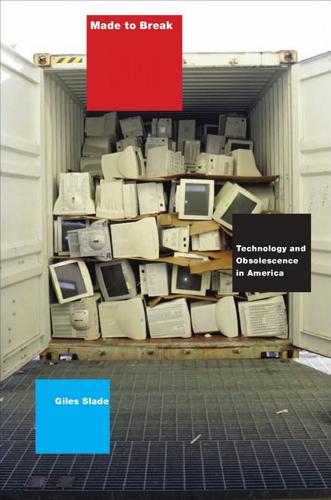
Made to Break: Technology and Obsolescence in America
by
Giles Slade
Published 14 Apr 2006
Reed, personal correspondence, January 26, 2005; William Safi e, “The Farewell Dossier,” New York Times, February 2, 2004; Gus W. Weiss Jr., “Cold War Reminiscences: Super Computer Games,” Intelligencer: Journal of U.S. Intelligence Studies (Winter/Spring 2003): 57–60; Weiss, “Duping the Soviets: The Farewell Dossier”; Gus W. Weiss Jr., “The Farewell Dossier: Strategic Deception and Economic Warfare in the Cold War” (unpublished, 2003), pp. 7–11. 41. Schweizer, Victory, p. 62. 42. Leebaert, The Fifty-Year Wound, p. 527. 43. Ibid., pp. 43, 71, 74. 44. Ibid., p. 83. 45. Ibid., p. 110; see also pp. 82–83. 46. Ibid. 47. Safi e, “The Farewell Dossier.” 48.
…
These details would later be fi tionalized in John Le Carré’s The Russia House (1989), in which Farewell’s original contact, Jacques Prevost, a highly successful French corporate leader, and M. Ameil, the mole’s firs contact, are transformed into a single person, the unsuccessful English publisher Barley Scott Blair.Le Carré also appears to have substituted Soviet rocket scientist Sergei Korolev for a more realistic portrayal of Vladimir Vetrov. While it was too dangerous for Gordievsky to escape the Soviet Union with a copy of his KGB history,he later collaborated on a Western version with a British intelligence historian. See Andrew and Gordievsky, KGB: The Inside Story. 24. Ibid., pp. 389–390, 393–395. 25. Sergei Kostine, Bonjour Farewell: La verite sur la taupe francaise du KGB (Paris: Robert Laffont, 1997), p. 33. 26.
…
Despite Soviet assurances that these trucks would never be used for military purposes, the USSR’s invasion of Afghanistan six years later was facilitated by an armada of Soviet vehicles whose drive trains included Kama engines.17 In 1981 Weiss had been at work on technology transfer to the Soviets for about a decade when President Francois Mitterrand invited President Ronald Reagan to meet with him privately en route to the G7 Summit in Ottawa. The French would soon pass a wealth of Soviet documents into American hands, and considering Weiss’s portfolio with the NSC and his Legion of Honor decoration, it was inevitable that this formidable body of intelligence—now known as the Farewell Dossier—would eventually come into his possession. By all accounts,Reagan had no reason to expect any such gift— and every reason to be suspicious of France’s new leader, who was a lifelong socialist and whose coalition cabinet included four communist ministers. But Mitterrand wanted a close and trusting partnership with America and had no great love for the Soviets.
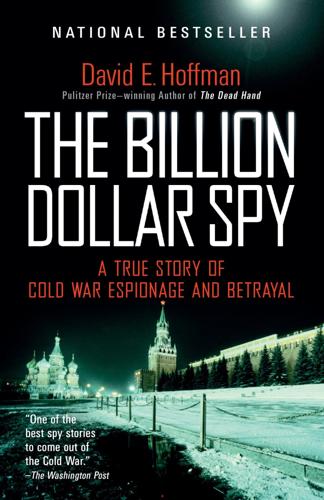
The Billion Dollar Spy: A True Story of Cold War Espionage and Betrayal
by
David E. Hoffman
Published 9 May 2016
The French intelligence service had been running a secret and highly productive agent inside the KGB, a forty-eight-year-old colonel, Vladimir Vetrov. The operation was still under way. Vetrov had turned over to the French four thousand pages of KGB documents about a global effort by the Soviet Union to steal high technology from the West, especially the United States. The KGB had a whole section, known as Line X, to carry out the heist. With Mitterrand’s approval, the French brought the documents to the CIA. The papers, known as the “Farewell Dossier,” showed in remarkable detail how the Soviet Union had hijacked Western advances in electronics and other technology to benefit its military machine.
…
With Reagan’s approval, the CIA engineered it to go haywire after a while, to reset pump speeds and valve settings to create pressures far beyond those acceptable to the pipeline joints and welds. The system exploded. The result was the most monumental nonnuclear explosion and fire ever seen from satellites in outer space. The Farewell Dossier was run right in Moscow. It reinforced something the CIA had concluded while running Tolkachev: it was possible to carry out penetrating spy operations under the nose of the KGB.8 Tolkachev surprised the Moscow station by signaling on December 7, 1981, that he wanted to meet right away. Rolph went to see him the next evening, at 9:05.
…
The first three digits of the message would indicate if it included a genuine message; if so, he could view the message, contained in five-digit groups, and then decode it using a onetime pad. He could receive up to four hundred five-digit groups in any one message. It was complex and cumbersome but a way to avoid the KGB. 6. Casey, “Progress at the CIA,” memo, May 6, 1981. 7. Burton Gerber, interview with author, Jan. 30, 2013. 8. Gus Weiss, “The Farewell Dossier,” Studies in Intelligence 39, no. 5 (1996). On the explosion, see Thomas C. Reed, At the Abyss: An Insider’s History of the Cold War (New York: Ballantine Books, 2004). For more on Vetrov, see Sergei Kostin and Eric Raynaud, Farewell: The Greatest Spy Story of the Twentieth Century, trans. Catherine Cauvin-Higgins (Las Vegas, Nev.: Amazon Crossing, 2011). 9.

1983: Reagan, Andropov, and a World on the Brink
by
Taylor Downing
Published 23 Apr 2018
At a side meeting Mitterrand astonished Reagan by telling him that the French intelligence service had recruited an agent in the KGB Centre in Moscow. This man, Captain Vladimir Vetrov, had been given the codename ‘Farewell’ by the French and he worked in the Science and Technology Directorate. He had passed on to the French thousands of documents recording the existence of a group of agents forming part of an operation called Line X, whose raison d’être was to copy and steal Western technology that was needed in the USSR. Mitterrand offered to pass on all that they had gathered to the new administration in Washington. The following month the Farewell dossier arrived at CIA headquarters. Thomas Reed, who would work on Reagan’s National Security Council, remembered that ‘It immediately caused a storm.
…
Index Page numbers in italics refer to illustrations Able Archer 83 exercise 222–56, 344 intelligence failures 256, 257–61, 263 NATO code changes 231, 240, 251 political leaders, participation of 231–2 scenario 224–5 Soviet monitoring of 227, 231, 232–3 Soviet perception as threat 224, 227–9, 232–3, 239, 240, 242, 250–1, 254, 256, 258–61 advanced warning aircraft (AWACs) 138–9 Afghanistan Mujahideen 76, 77, 110, 310, 323 Soviet invasion and occupation of 30, 76–7, 94 Soviet withdrawal from 323 US covert programmes in 77, 110, 310, 323 US military incursions 342 US trade sanctions and 30, 76, 179 Air Force One 232, 261 aircraft carriers 54 airspace violations Soviet ‘shoot-to-kill’ policy 143, 158, 179, 187 US aircraft 142–3, 157, 162, 187 see also Korean Air Lines (KAL) Flight 007 al-Assad, Hafez 204 al-Qaeda 77 Allen, Richard 20, 32 Allied Command Europe (ACE) 222 Ames, Aldrich 277–9, 282, 283, 284, 286, 292, 299, 334, 335, 337 Anchorage 149–51, 158 Anderson, Martin 91, 92, 93, 98 Andrew, Christopher 338 Andropov, Yuri 36, 37–40, 41–2, 45–8, 49–50, 241 and the Able Archer 83 exercise 242, 250, 255 background of 39, 40, 41 CIA profile of 106 domestic reforms 87–8 and the downing of KAL 007 179–80, 186–7, 216 elected as Soviet head of state 35 and Gorbachev 50, 87, 215, 236 head of KGB 35, 45, 46–7, 48, 69, 74, 80, 83, 106, 341 ‘Hungarian complex’ 44, 47 and the Hungarian Revolution 43–4 illness and death 180, 213–16, 219–21, 234–6, 263 and the invasion of Afghanistan 76 meets with Averell Harriman 146–8 nuclear paranoia 80, 87, 147, 148, 201, 216–17, 237, 240 and Operation RYaN 83, 87, 88, 216 response to ‘evil empire’ rhetoric 89, 105 on SDI 104, 105, 147 ‘shoot-to-kill’ order 143, 158, 187 suspicion and fear of the West 47, 49, 80, 87, 88 Androsov, Stanislav 277 Angola 29, 70, 101 Annan, Kofi 200 anti-ballistic missiles (ABMs) 12, 13 anti-ballistic missiles (ABM) Treaty 92, 313, 314 Apollo spacecraft 14 Arafat, Yasser 203, 264 Arbatov, Georgy 147 Arlov, Yuri 49 Armenia 333 arms control Gorbachev’s views on 299, 304, 306, 309, 311, 312–13, 314–15, 318, 324 Reagan’s views on 304, 306, 314–15 zero-zero option 94–5, 315, 316, 318, 321–2 arms control talks and agreements anti-ballistic missiles (ABM) Treaty 92, 313, 314 Intermediate Nuclear Force (INF) Treaty 320, 321–2, 333 Nuclear Non-Proliferation Treaty 13 Partial Test Ban Treaty 13 Strategic Arms Limitation Treaty (SALT I) 13, 14, 94, 156 Strategic Arms Limitation Treaty (SALT II) 30, 77 Strategic Arms Reduction Talks (START) 94, 105, 270, 334 Armstrong, Anne 349 Arzamus-16 6 Atlantic Lion 83 exercise 223 Atlas missiles 12–13 atom bomb 1–6, 93 Autumn Forge 83 exercises 223, 224 Azerbaijan 333 B-29 bomber 2, 4, 5 B-47 bomber 190 B-52 bomber 8–9, 52–3, 138, 190–1, 192 B1-B Bomber 52 Baker, James 32, 57, 327, 330 Balashika training camp 109, 204 Barents Sea 126, 127, 140 Begin, Menachem 203, 205–6 Beirut airport suicide bomber 208–9 Israeli bombardment of 205–7, 228 US embassy bomb 208 Belarus 333, 334 Benghazi 310 Beria, Lavrenti 5, 6 Berlin, Reagan’s visit to 320–1 Berlin Wall 45, 321 fall of 330–1, 331, 341 Bikini Atoll 7–8 Billion Dollar Spy see Tolkachev, Adolf bin Laden, Osama 77 Bishop, Maurice 210 ‘The Black Book’ 241 Black Program 54 Blanton, Tom 348 Bowen, Ann 129–30, 131, 134 Brady, James 56, 57 Brady, Nicholas 208 Brandt, Willy 135 Brezhnev, Leonid 37, 38, 45, 50, 72, 86, 264 death and funeral of 34, 35, 37, 87 failing health 71, 219 foreign policy 70 and the invasion of Afghanistan 76 meets Carter 297 nuclear policy 70–1 relations with Reagan 59 signs Strategic Arms Limitation Treaty (SALT I) 13 war games, participation in 68 Britain and Able Archer 83 exercise 231, 232 Campaign for Nuclear Disarmament 95, 123–4 Falklands War 118, 210 Gorbachev’s visit to 271–4 London KGB residency 81, 118–20, 122, 218, 228, 279 nuclear capability 13 Nuclear Non-Proliferation Treaty 13 peace movement 95–6 Trident nuclear missile system 319 British Commonwealth 210, 211, 259 British Labour Party 122–3 Brown, Pat 27 Brown, Ron 123 Browne, John 293 Brzezinski, Zbigniew 189–90 Budanov, Colonel 280 Budapest 43, 44 Bulgaria 332 intelligence services 85 Burr, William 348 Burt, Richard 171 Bush, George H.W. 37, 38, 262, 264, 327–8 election of 327 meets with Andropov 38 meets with Gorbachev 332 signs START 1 334 as vice-president 31 Bush, George W. 256, 342 ‘the button’ 15, 16, 241 Cable News Network (CNN) 183 Callender, Colonel Spike 226, 256 Cambodia 29, 301 Canadian Navy 137 Carstens, Karl 37 Carter, Jimmy 28, 114, 189, 298 and the invasion of Afghanistan 30, 76–7 meets Brezhnev 297 Tehran embassy hostage crisis 20, 29 Casey, William 58, 108, 110, 144, 169, 178, 185–6, 299–300, 320, 337 and Abel Archer exercise 263 assessment of Gorbachev 295 death of 347 head of CIA 107–8, 109 opposes Intermediate Nuclear Force (INF) Treaty 320 Ceauşescu, Elena 332 Ceauşescu, Nicolae 332 Central Intelligence Agency (CIA) 6, 38, 106–12, 277 and the Able Archer 83 exercise 256, 257, 258 aggressive and proactive policy 107–8, 144 assessment of Gorbachev 294–5 bureaucracy 109 covert aid to anti-communist and resistance movements 110 directorates 109–10 and the downing of KAL 007 172, 174, 178–9 and the Farewell dossier 143–4 and the Geneva summit 301 Intelligence Directorate 109–12 intelligence misjudgements and failures 106, 111–12, 257–61, 278–9, 339–40 mole within see Ames, Aldrich Operations Directorate 110 report on events of 1983 339–40 Soviet agents 49, 283–4, 285–6 on Soviet paranoia 80 technological sabotage 144–5 Centre for Documentation 129 Chancellor, Henry 346 Chazov, Dr Yevgeny 215, 234 Chebrikov, Viktor 279 ‘cheggets’ system 241, 250 Cheney, Richard 327 Cherkashin, Viktor 285 Chernenko, Konstantin 34, 35, 181, 215, 220, 268, 270 elected Soviet head of state 264 ill health and death 275, 293 Chernobyl nuclear disaster (1986) 310–11 Chernyaev, Anatoly 311, 312, 319 China economic reforms 330 nuclear capability 13 Sino–Soviet relations 44, 45, 220, 330 Tiananmen Square massacre 330 Christian churches’ response to nuclear strategy 66, 96 Chun Byung-in, Captain 150, 151, 153–5 Churchill, Winston 24, 146 civil defence Soviet 30, 237 Western 82 Clark, William 98, 99 Clinton, Hillary 342 Cobra Ball missions 156, 162, 170, 173, 178–9 Cold War 1983 war scare see nuclear war scare Cuban missile crisis (1962) 11, 45, 114, 192, 193, 204, 230, 344 DEFCON levels 230 détente 14, 29, 52, 70, 71, 75, 94 end of 332, 344 false alerts 189–201, 239 Israeli-Palestinian conflict 202–9 Korean Air Lines (KAL) Flight 007 incident 149–56, 157–88 ‘proxy’ engagements through client states 205 stalemate 92 Cole, John 274 Command Post Exercise 222 see also Able Archer 83 exercise Committee on the Present Danger (CPD) 29, 30, 32, 49, 51 Commonwealth of Independent States 333 Congress of People’s Deputies 329 Contras 110, 319–20 Counterforce 10 Crimea 341 Cruise missiles 53, 78, 88, 94, 95, 123, 135, 216, 220, 258, 270, 299, 309, 321 Cuban missile crisis (1962) 11, 45, 114, 192, 204, 230, 344 Black Saturday 193 cyber attacks 342 Czechoslovakia 42, 238, 248 intelligence services 85 Prague Spring 47 Soviet invasion of 120–1 Velvet Revolution 332 The Day After (film) 261 ‘dead drops’ 285 Deaver, Michael 32 Defence Intelligence Agency (DIA) 172, 179 Defense Readiness Condition (DEFCON) 204, 230 détente 14, 29, 52, 70, 71, 94 end of 75 deterrence 92, 96, 101, 216 Devetyarov, Colonel Maxim 247 Dobrynin, Anatoly 114–16, 117, 146, 148, 180–1 Donovan, William 107 ‘Doomsday Plane’ see National Emergency Airborne Command Post (Boeing 747) double agents 118–35 Hanssen, Robert 284–5 ideological commitment 120–1, 278 Martynov, Valery 285–6 Vetrov, Captain Vladimir 143 see also Ames, Aldrich; Gordievsky, Oleg ‘dry-cleaning’ 286, 287, 289 Dubček, Alexander 47 Dukakis, Michael 327 Dulles, John Foster 8 Duluth air base 192, 193 Eagleburger, Lawrence 171, 174, 260, 262 East Germany 14, 42, 238, 247, 248, 329 collapse of 330–1, 335 foreign intelligence service see HVA Stasi 85, 128, 130, 133, 335 Egypt 202, 343 Eisenhower, Dwight D. 8, 10, 43 El Salvador 70 Eniwetok 7 espionage KGB foreign residencies 46, 81, 118–20, 122–5, 218, 227, 228, 277, 278, 279 listening stations 163–4, 168, 170, 176, 183, 217, 227, 231, 267–8 observation satellites 90, 111, 194–5, 196, 248, 256 post-Cold War 334 RC-135 spy planes 140–1, 156–7, 170, 178, 182 technological sabotage 144–5 see also Central Intelligence Agency (CIA); double agents; HVA; KGB Estonia 329 Ethiopia 70, 101 European Community 129 ‘evil empire’ rhetoric 66–7, 89, 117, 176, 182, 216, 324 F-15 fighter 205 F-16 fighter 138, 205 F-117 Nighthawk 54 F/A-18 Hornet jet 53 Falklands War 118, 210 false alerts 189–201, 239 Farewell dossier 143–4 FBI 127 mole within 284–5 and Red Scares 24 Filatov, Anatoly 49 Finland 291 Winter War 40 ‘First Lightning’ atomic test 5 Fischer, Ben 340, 344, 345–6 ‘Flash’ telegrams 251 FleetEx 83 exercises 137, 138–9, 158 Ford, Gerald 14, 28 Foster, Jodie 58 France intelligence service 143 nuclear capability 13 Friedman, Milton 31 Gaddafi, Muammar 110, 310 Gates, Robert 219, 237, 256, 339, 340, 347 on Kremlin paranoia 112 on SDI 117 Gay, Eugene 226–7 Gemayel, Bashir 206 General Electric (GE) 26 Geneva summit (1985) 297–9, 300–9 boathouse meeting 301, 305 joint communiqué 306, 308 Georgia 329, 341 glasnost 311, 325 Gold Codes 241 Goldwater, Barry 26 Golubev, General 280 Gomulka, Wladyslaw 42, 43 Gorbachev, Mikhail 50, 215, 220, 236, 270–1, 344 and Afghanistan withdrawal 323 arms control and 299, 304, 306, 309, 311, 312–13, 314–15, 318, 324 Casey’s appraisal of 295 Chernobyl and 310–11 CIA assessments of 294–5 and dismantling of the Soviet Union 329, 333 elected Soviet head of state 275–6, 293–4 failed coup against 333 ‘freedom of choice’ proposal 328 Geneva summit 297–9, 300–7, 305 and Gordievsky 338 hostility to SDI 273, 298, 299, 304, 305, 306, 309, 313, 314, 315, 316, 319 and human rights issues 306, 314, 322 meets with Bush 332 nuclear weapons elimination proposal 309, 313 ‘peace offensive’ 309, 310 perestroika and glasnost 311, 325, 329 political decline 333 political reforms 311–12, 329 popularity abroad 323 on Reagan 294, 304, 309, 319 reduction of Soviet forces in Europe 328, 333–4 Reykjavik summit 311, 312–18, 317 signs INF Treaty 321 signs START 1 334 visits Britain 271–4, 274 visits China 330 Washington summit 321–3 Gorbachev, Raisa 272, 276, 293, 306, 323 Gordievsky, Leila 118, 282, 338 Gordievsky, Oleg 118–19, 120–5, 127, 259, 260, 270, 284, 336–9 Companion of the Order of St Michael and St George 339 debriefing 336–7 exfiltration 286–92 and Gorbachev’s visit to Britain 271 ideological commitments 120–1 KGB interrogation 279–82 meets Reagan 337, 337 MI6 operative 121–2, 123, 125, 126, 127, 218, 279, 281 and Operation RYaN 84–5, 118, 251 sentenced to death in absentia 339 Gorshikov, Admiral Georgi 245 Great Society reforms 26–7 Great Terror 36, 39–40 Greenham Common peace camp 95 Greenland-Iceland-United Kingdom Gap (GIUK Gap) 140 Grenada 210 US invasion of 210–12, 217 Grishin, Viktor 270, 275 Gromyko, Andrei 38, 72, 79, 179, 185, 215, 240, 260, 270, 275, 276–7 and the downing of KAL 007 185 head of Supreme Soviet 275, 297 meets with Shultz 296 GRU and the Able Archer 83 exercise 245, 251 foreign residencies 119 Operation RYaN 80, 81–5, 251 Grushko, Viktor 280, 281 Guk, Arkady 119–20, 124, 125 H-bomb (hydrogen bomb) 6–7 Haavik, Gunvor Galtung 126 Habib, Philip 205, 206 Haig, Alexander 32, 57, 94, 108–9, 115 Hanssen, Robert 284–5, 286, 292, 334 Harriman, Averell 146–8 Hartman, Arthur 263 Havel, Václav 332 Helms, Jesse 149 Helsinki Accords 14, 29, 48 Helsinki Monitoring Group 48–9 Heseltine, Michael 95–6, 231, 272 Hezbollah 209, 217, 232 Hill, General James 91 Hinckley, John Jr 58 Hirohito, Emperor 4 Hiroshima, bombing of (1945) 1–4, 93 Hirshberg, Jim 348 Hitler, Adolf 36, 40 Hollywood Ten 24 Honecker, Erich 329, 330 Hoover, J.
…
Index Page numbers in italics refer to illustrations Able Archer 83 exercise 222–56, 344 intelligence failures 256, 257–61, 263 NATO code changes 231, 240, 251 political leaders, participation of 231–2 scenario 224–5 Soviet monitoring of 227, 231, 232–3 Soviet perception as threat 224, 227–9, 232–3, 239, 240, 242, 250–1, 254, 256, 258–61 advanced warning aircraft (AWACs) 138–9 Afghanistan Mujahideen 76, 77, 110, 310, 323 Soviet invasion and occupation of 30, 76–7, 94 Soviet withdrawal from 323 US covert programmes in 77, 110, 310, 323 US military incursions 342 US trade sanctions and 30, 76, 179 Air Force One 232, 261 aircraft carriers 54 airspace violations Soviet ‘shoot-to-kill’ policy 143, 158, 179, 187 US aircraft 142–3, 157, 162, 187 see also Korean Air Lines (KAL) Flight 007 al-Assad, Hafez 204 al-Qaeda 77 Allen, Richard 20, 32 Allied Command Europe (ACE) 222 Ames, Aldrich 277–9, 282, 283, 284, 286, 292, 299, 334, 335, 337 Anchorage 149–51, 158 Anderson, Martin 91, 92, 93, 98 Andrew, Christopher 338 Andropov, Yuri 36, 37–40, 41–2, 45–8, 49–50, 241 and the Able Archer 83 exercise 242, 250, 255 background of 39, 40, 41 CIA profile of 106 domestic reforms 87–8 and the downing of KAL 007 179–80, 186–7, 216 elected as Soviet head of state 35 and Gorbachev 50, 87, 215, 236 head of KGB 35, 45, 46–7, 48, 69, 74, 80, 83, 106, 341 ‘Hungarian complex’ 44, 47 and the Hungarian Revolution 43–4 illness and death 180, 213–16, 219–21, 234–6, 263 and the invasion of Afghanistan 76 meets with Averell Harriman 146–8 nuclear paranoia 80, 87, 147, 148, 201, 216–17, 237, 240 and Operation RYaN 83, 87, 88, 216 response to ‘evil empire’ rhetoric 89, 105 on SDI 104, 105, 147 ‘shoot-to-kill’ order 143, 158, 187 suspicion and fear of the West 47, 49, 80, 87, 88 Androsov, Stanislav 277 Angola 29, 70, 101 Annan, Kofi 200 anti-ballistic missiles (ABMs) 12, 13 anti-ballistic missiles (ABM) Treaty 92, 313, 314 Apollo spacecraft 14 Arafat, Yasser 203, 264 Arbatov, Georgy 147 Arlov, Yuri 49 Armenia 333 arms control Gorbachev’s views on 299, 304, 306, 309, 311, 312–13, 314–15, 318, 324 Reagan’s views on 304, 306, 314–15 zero-zero option 94–5, 315, 316, 318, 321–2 arms control talks and agreements anti-ballistic missiles (ABM) Treaty 92, 313, 314 Intermediate Nuclear Force (INF) Treaty 320, 321–2, 333 Nuclear Non-Proliferation Treaty 13 Partial Test Ban Treaty 13 Strategic Arms Limitation Treaty (SALT I) 13, 14, 94, 156 Strategic Arms Limitation Treaty (SALT II) 30, 77 Strategic Arms Reduction Talks (START) 94, 105, 270, 334 Armstrong, Anne 349 Arzamus-16 6 Atlantic Lion 83 exercise 223 Atlas missiles 12–13 atom bomb 1–6, 93 Autumn Forge 83 exercises 223, 224 Azerbaijan 333 B-29 bomber 2, 4, 5 B-47 bomber 190 B-52 bomber 8–9, 52–3, 138, 190–1, 192 B1-B Bomber 52 Baker, James 32, 57, 327, 330 Balashika training camp 109, 204 Barents Sea 126, 127, 140 Begin, Menachem 203, 205–6 Beirut airport suicide bomber 208–9 Israeli bombardment of 205–7, 228 US embassy bomb 208 Belarus 333, 334 Benghazi 310 Beria, Lavrenti 5, 6 Berlin, Reagan’s visit to 320–1 Berlin Wall 45, 321 fall of 330–1, 331, 341 Bikini Atoll 7–8 Billion Dollar Spy see Tolkachev, Adolf bin Laden, Osama 77 Bishop, Maurice 210 ‘The Black Book’ 241 Black Program 54 Blanton, Tom 348 Bowen, Ann 129–30, 131, 134 Brady, James 56, 57 Brady, Nicholas 208 Brandt, Willy 135 Brezhnev, Leonid 37, 38, 45, 50, 72, 86, 264 death and funeral of 34, 35, 37, 87 failing health 71, 219 foreign policy 70 and the invasion of Afghanistan 76 meets Carter 297 nuclear policy 70–1 relations with Reagan 59 signs Strategic Arms Limitation Treaty (SALT I) 13 war games, participation in 68 Britain and Able Archer 83 exercise 231, 232 Campaign for Nuclear Disarmament 95, 123–4 Falklands War 118, 210 Gorbachev’s visit to 271–4 London KGB residency 81, 118–20, 122, 218, 228, 279 nuclear capability 13 Nuclear Non-Proliferation Treaty 13 peace movement 95–6 Trident nuclear missile system 319 British Commonwealth 210, 211, 259 British Labour Party 122–3 Brown, Pat 27 Brown, Ron 123 Browne, John 293 Brzezinski, Zbigniew 189–90 Budanov, Colonel 280 Budapest 43, 44 Bulgaria 332 intelligence services 85 Burr, William 348 Burt, Richard 171 Bush, George H.W. 37, 38, 262, 264, 327–8 election of 327 meets with Andropov 38 meets with Gorbachev 332 signs START 1 334 as vice-president 31 Bush, George W. 256, 342 ‘the button’ 15, 16, 241 Cable News Network (CNN) 183 Callender, Colonel Spike 226, 256 Cambodia 29, 301 Canadian Navy 137 Carstens, Karl 37 Carter, Jimmy 28, 114, 189, 298 and the invasion of Afghanistan 30, 76–7 meets Brezhnev 297 Tehran embassy hostage crisis 20, 29 Casey, William 58, 108, 110, 144, 169, 178, 185–6, 299–300, 320, 337 and Abel Archer exercise 263 assessment of Gorbachev 295 death of 347 head of CIA 107–8, 109 opposes Intermediate Nuclear Force (INF) Treaty 320 Ceauşescu, Elena 332 Ceauşescu, Nicolae 332 Central Intelligence Agency (CIA) 6, 38, 106–12, 277 and the Able Archer 83 exercise 256, 257, 258 aggressive and proactive policy 107–8, 144 assessment of Gorbachev 294–5 bureaucracy 109 covert aid to anti-communist and resistance movements 110 directorates 109–10 and the downing of KAL 007 172, 174, 178–9 and the Farewell dossier 143–4 and the Geneva summit 301 Intelligence Directorate 109–12 intelligence misjudgements and failures 106, 111–12, 257–61, 278–9, 339–40 mole within see Ames, Aldrich Operations Directorate 110 report on events of 1983 339–40 Soviet agents 49, 283–4, 285–6 on Soviet paranoia 80 technological sabotage 144–5 Centre for Documentation 129 Chancellor, Henry 346 Chazov, Dr Yevgeny 215, 234 Chebrikov, Viktor 279 ‘cheggets’ system 241, 250 Cheney, Richard 327 Cherkashin, Viktor 285 Chernenko, Konstantin 34, 35, 181, 215, 220, 268, 270 elected Soviet head of state 264 ill health and death 275, 293 Chernobyl nuclear disaster (1986) 310–11 Chernyaev, Anatoly 311, 312, 319 China economic reforms 330 nuclear capability 13 Sino–Soviet relations 44, 45, 220, 330 Tiananmen Square massacre 330 Christian churches’ response to nuclear strategy 66, 96 Chun Byung-in, Captain 150, 151, 153–5 Churchill, Winston 24, 146 civil defence Soviet 30, 237 Western 82 Clark, William 98, 99 Clinton, Hillary 342 Cobra Ball missions 156, 162, 170, 173, 178–9 Cold War 1983 war scare see nuclear war scare Cuban missile crisis (1962) 11, 45, 114, 192, 193, 204, 230, 344 DEFCON levels 230 détente 14, 29, 52, 70, 71, 75, 94 end of 332, 344 false alerts 189–201, 239 Israeli-Palestinian conflict 202–9 Korean Air Lines (KAL) Flight 007 incident 149–56, 157–88 ‘proxy’ engagements through client states 205 stalemate 92 Cole, John 274 Command Post Exercise 222 see also Able Archer 83 exercise Committee on the Present Danger (CPD) 29, 30, 32, 49, 51 Commonwealth of Independent States 333 Congress of People’s Deputies 329 Contras 110, 319–20 Counterforce 10 Crimea 341 Cruise missiles 53, 78, 88, 94, 95, 123, 135, 216, 220, 258, 270, 299, 309, 321 Cuban missile crisis (1962) 11, 45, 114, 192, 204, 230, 344 Black Saturday 193 cyber attacks 342 Czechoslovakia 42, 238, 248 intelligence services 85 Prague Spring 47 Soviet invasion of 120–1 Velvet Revolution 332 The Day After (film) 261 ‘dead drops’ 285 Deaver, Michael 32 Defence Intelligence Agency (DIA) 172, 179 Defense Readiness Condition (DEFCON) 204, 230 détente 14, 29, 52, 70, 71, 94 end of 75 deterrence 92, 96, 101, 216 Devetyarov, Colonel Maxim 247 Dobrynin, Anatoly 114–16, 117, 146, 148, 180–1 Donovan, William 107 ‘Doomsday Plane’ see National Emergency Airborne Command Post (Boeing 747) double agents 118–35 Hanssen, Robert 284–5 ideological commitment 120–1, 278 Martynov, Valery 285–6 Vetrov, Captain Vladimir 143 see also Ames, Aldrich; Gordievsky, Oleg ‘dry-cleaning’ 286, 287, 289 Dubček, Alexander 47 Dukakis, Michael 327 Dulles, John Foster 8 Duluth air base 192, 193 Eagleburger, Lawrence 171, 174, 260, 262 East Germany 14, 42, 238, 247, 248, 329 collapse of 330–1, 335 foreign intelligence service see HVA Stasi 85, 128, 130, 133, 335 Egypt 202, 343 Eisenhower, Dwight D. 8, 10, 43 El Salvador 70 Eniwetok 7 espionage KGB foreign residencies 46, 81, 118–20, 122–5, 218, 227, 228, 277, 278, 279 listening stations 163–4, 168, 170, 176, 183, 217, 227, 231, 267–8 observation satellites 90, 111, 194–5, 196, 248, 256 post-Cold War 334 RC-135 spy planes 140–1, 156–7, 170, 178, 182 technological sabotage 144–5 see also Central Intelligence Agency (CIA); double agents; HVA; KGB Estonia 329 Ethiopia 70, 101 European Community 129 ‘evil empire’ rhetoric 66–7, 89, 117, 176, 182, 216, 324 F-15 fighter 205 F-16 fighter 138, 205 F-117 Nighthawk 54 F/A-18 Hornet jet 53 Falklands War 118, 210 false alerts 189–201, 239 Farewell dossier 143–4 FBI 127 mole within 284–5 and Red Scares 24 Filatov, Anatoly 49 Finland 291 Winter War 40 ‘First Lightning’ atomic test 5 Fischer, Ben 340, 344, 345–6 ‘Flash’ telegrams 251 FleetEx 83 exercises 137, 138–9, 158 Ford, Gerald 14, 28 Foster, Jodie 58 France intelligence service 143 nuclear capability 13 Friedman, Milton 31 Gaddafi, Muammar 110, 310 Gates, Robert 219, 237, 256, 339, 340, 347 on Kremlin paranoia 112 on SDI 117 Gay, Eugene 226–7 Gemayel, Bashir 206 General Electric (GE) 26 Geneva summit (1985) 297–9, 300–9 boathouse meeting 301, 305 joint communiqué 306, 308 Georgia 329, 341 glasnost 311, 325 Gold Codes 241 Goldwater, Barry 26 Golubev, General 280 Gomulka, Wladyslaw 42, 43 Gorbachev, Mikhail 50, 215, 220, 236, 270–1, 344 and Afghanistan withdrawal 323 arms control and 299, 304, 306, 309, 311, 312–13, 314–15, 318, 324 Casey’s appraisal of 295 Chernobyl and 310–11 CIA assessments of 294–5 and dismantling of the Soviet Union 329, 333 elected Soviet head of state 275–6, 293–4 failed coup against 333 ‘freedom of choice’ proposal 328 Geneva summit 297–9, 300–7, 305 and Gordievsky 338 hostility to SDI 273, 298, 299, 304, 305, 306, 309, 313, 314, 315, 316, 319 and human rights issues 306, 314, 322 meets with Bush 332 nuclear weapons elimination proposal 309, 313 ‘peace offensive’ 309, 310 perestroika and glasnost 311, 325, 329 political decline 333 political reforms 311–12, 329 popularity abroad 323 on Reagan 294, 304, 309, 319 reduction of Soviet forces in Europe 328, 333–4 Reykjavik summit 311, 312–18, 317 signs INF Treaty 321 signs START 1 334 visits Britain 271–4, 274 visits China 330 Washington summit 321–3 Gorbachev, Raisa 272, 276, 293, 306, 323 Gordievsky, Leila 118, 282, 338 Gordievsky, Oleg 118–19, 120–5, 127, 259, 260, 270, 284, 336–9 Companion of the Order of St Michael and St George 339 debriefing 336–7 exfiltration 286–92 and Gorbachev’s visit to Britain 271 ideological commitments 120–1 KGB interrogation 279–82 meets Reagan 337, 337 MI6 operative 121–2, 123, 125, 126, 127, 218, 279, 281 and Operation RYaN 84–5, 118, 251 sentenced to death in absentia 339 Gorshikov, Admiral Georgi 245 Great Society reforms 26–7 Great Terror 36, 39–40 Greenham Common peace camp 95 Greenland-Iceland-United Kingdom Gap (GIUK Gap) 140 Grenada 210 US invasion of 210–12, 217 Grishin, Viktor 270, 275 Gromyko, Andrei 38, 72, 79, 179, 185, 215, 240, 260, 270, 275, 276–7 and the downing of KAL 007 185 head of Supreme Soviet 275, 297 meets with Shultz 296 GRU and the Able Archer 83 exercise 245, 251 foreign residencies 119 Operation RYaN 80, 81–5, 251 Grushko, Viktor 280, 281 Guk, Arkady 119–20, 124, 125 H-bomb (hydrogen bomb) 6–7 Haavik, Gunvor Galtung 126 Habib, Philip 205, 206 Haig, Alexander 32, 57, 94, 108–9, 115 Hanssen, Robert 284–5, 286, 292, 334 Harriman, Averell 146–8 Hartman, Arthur 263 Havel, Václav 332 Helms, Jesse 149 Helsinki Accords 14, 29, 48 Helsinki Monitoring Group 48–9 Heseltine, Michael 95–6, 231, 272 Hezbollah 209, 217, 232 Hill, General James 91 Hinckley, John Jr 58 Hirohito, Emperor 4 Hiroshima, bombing of (1945) 1–4, 93 Hirshberg, Jim 348 Hitler, Adolf 36, 40 Hollywood Ten 24 Honecker, Erich 329, 330 Hoover, J.
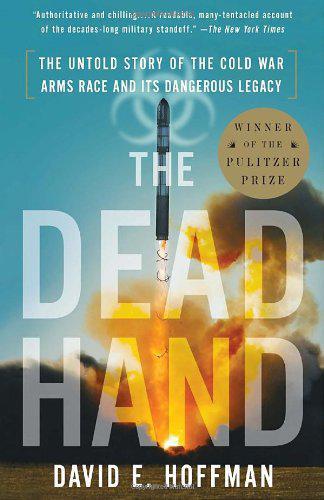
The Dead Hand: The Untold Story of the Cold War Arms Race and Its Dangerous Legacy
by
David Hoffman
Published 1 Jan 2009
Reagan remembered "an icy reply from Brezhnev." 18 At a private moment at an economic summit in Ottawa on July 19, 1981, French President Francois Mitterrand gave Reagan some stunning news. The French had recruited a defector in place in Moscow, whom the French had code-named "Farewell," and he had provided a huge treasure trove of intelligence. Colonel Vladimir Vetrov was an engineer whose job was to evaluate the intelligence collected by the KGB's technology directorate--Directorate T--responsible for finding and stealing the latest in Western high technology. A special arm of the KGB, known as Line X, carried out the thefts. Motivated to help the West, Vetrov had secretly photographed four thousand KGB documents on the program.
…
"Since 1970, Line X had obtained thousands of documents and sample products in such quantity that it appeared the Soviet military and civilian sectors were in large measure running their research on that of the West, particularly the United States. Our science was supporting their national defense." 20 Rather than roll up the Line X officers and expel them, Reagan approved a secret plan to exploit the Farewell dossier for economic warfare against the Soviet Union. The plan was to secretly feed the Line X officers with technology rigged to self-destruct after a certain interval. The idea came from Weiss, who approached Casey, who took it to Reagan. The CIA worked with American industry to alter products to be slipped to the KGB, matching the KGB's shopping list.
…
In An American Life, pp. 272-273, Reagan reprints a broader version of the handwritten letter, apparently reflecting revisions by the State Department and others. 17 James A. Baker III, "Work Hard, Study ...And Keep Out of Politics!" (New York: G. P. Putnam's Sons, 2006), p. 163. 18 Reagan, An American Life, p. 273. 19 Thomas C. Reed, At the Abyss: An Insider's History of the Cold War (New York: Ballantine Books, 2004), pp. 266-270. 20 Gus Weiss, "The Farewell Dossier," Studies in Intelligence, Center for the Study of Intelligence, Central Intelligence Agency, vol. 39, no. 5, 1996. 21 Pelton volunteered information about the program as early as his first contact with the Soviets on Jan. 15, 1980, and received $20,000 from them in October. He received another $15,000 in 1983.
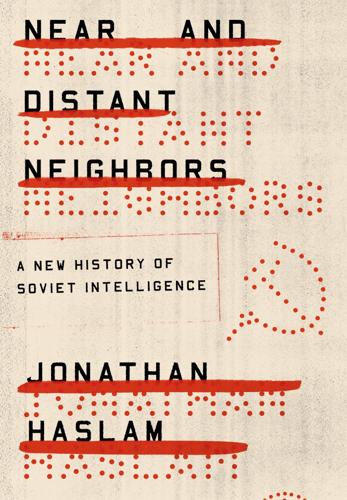
Near and Distant Neighbors: A New History of Soviet Intelligence
by
Jonathan Haslam
Published 21 Sep 2015
The Strange Case of Vetrov A key failure, the betrayal of the KGB’s entire military-industrial intelligence network by Vladimir Vetrov (agent “Farewell”) to the French in 1981–1982, seriously undermined a branch of the service critical to meeting the American challenge presented by the Strategic Defense Initiative, the American project for space-based defence with the potential for a preemptive first strike against missiles in their launch phase. Born in 1932 to Muscovite industrial workers, Vladimir Vetrov came to the attention of the KGB in 1959 while working as an engineer at a computer factory. On July 9 he sent in a letter of application that succceeded in gaining him admission to the KGB.
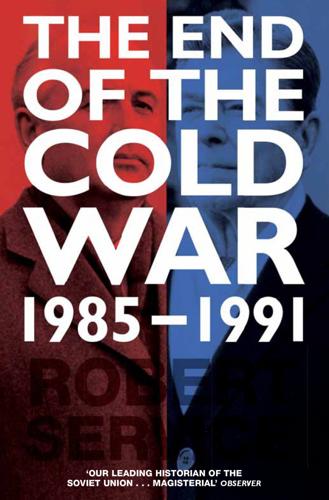
The End of the Cold War: 1985-1991
by
Robert Service
Published 7 Oct 2015
In fact it was a satirical spoof written by Matlock, who was having a bit of fun while describing the dilemmas that currently faced Gorbachëv.1 Poindexter liked it enough to send a copy to the President, who asked for more briefings from the same ‘secret’ informant.2 The West’s real intelligence agencies had performed their work efficiently for many years. In 1981 France’s Directoire de la Surveillance Territoire (DST) recruited the KGB’s Lieutenant Colonel Vladimir Vetrov, who supplied names of agents carrying out technological espionage in the NATO countries. Mitterrand told Reagan, and the Americans and their allies quickly closed down the spy networks.3 The United Kingdom’s MI6 was still more impressive, at least until July 1985 when its double agent Oleg Gordievski, a leading KGB officer, had to flee for his life to Britain.4 Casey proudly reported that the CIA had enlisted thousands of individuals to help the cause: ‘Some for money – some for freedom and power – some for patriotism.’5 The Americans no longer had agents at the highest levels in Moscow: their best information came from outright defectors.
…
Weinberger, Annual Report to the Congress: Fiscal Year 1988 (Washington, DC: US Department of Defense, 12 January 1987) C. W. Weinberger, In the Arena: A Memoir of the Twentieth Century (Washington, DC: Regnery, 2001) B. Weiser, A Secret Life: The Polish Officer, His Covert Mission, and the Price He Paid to Save His Country (New York: PublicAffairs, 2004) G. S. Weiss, The Farewell Dossier: Duping the Soviets (Washington, DC: Center for the Study of Intelligence); retrieved from www.cia.gov/library/center-for-the-study-of-intelligence/kent-csi/vol39no5/pdf/v39i5a14p.pdf A. Wendt, Social Theory of International Politics (Cambridge: Cambridge University Press, 1999) O. A. Westad, The Global Cold War: Third World Interventions and the Making of Our Times (Cambridge: Cambridge University Press, 2005) S.
…
Lipset, ‘Punishing Russia’, The New Republic, no. 3, 5 August 1985. 26. Thomas H. Naylor, ‘For More Trade With the Russians’, New York Times, 17 December 1984. 27. New York Times, 2 August 1983. 28. Ibid. 29. Ibid., 7 March 1984. 30. Ibid. 31. Ibid., 17 May 1984. 32. T. C. Reed, At the Abyss, pp. 266–9. 33. G. S. Weiss, The Farewell Dossier: Duping the Soviets (CSI Publications: Studies in Intelligence); retrieved from www.cia.gov/library/center-for-the-study-of-intelligence/kent-csi/vol39no5/pdf/v39i5a14p.pdf, p. 125. 34. A. Dobrynin, In Confidence: Moscow’s Ambassador to America’s Cold War Presidents, p. 537. 35. G. M. Kornienko in S.
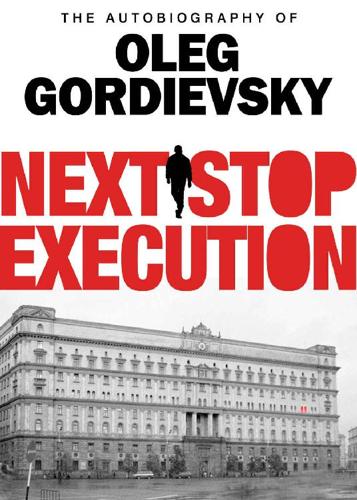
Next Stop Execution: The Autobiography of Oleg Gordievsky
by
Oleg Gordievsky
Published 13 Apr 2015
They were using the unflattering code-names which every KGB defector is assigned in the files. ‘What about Rascal? What about Scruff?’ ‘I don’t know what you’re talking about,’ I said, and I continued to profess ignorance until they were forced to name one traitor openly — Lieutenant Colonel Vladimir Vetrov, who had co-operated with the French intelligence and had been executed in 1984. They asked me what I thought of such people, watching my reaction and waiting to see what I said. Then suddenly the search came nearer home, and they started to talk about my own past. ‘Ah yes, but we know who recruited you in Copenhagen,’ said Golubev, chain-smoking as always.
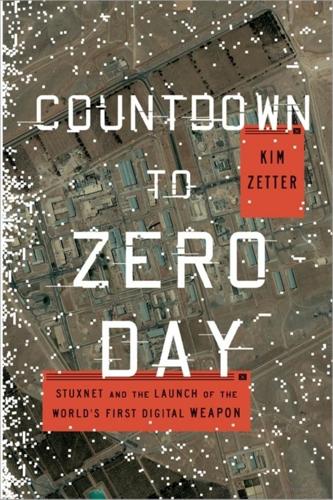
Countdown to Zero Day: Stuxnet and the Launch of the World's First Digital Weapon
by
Kim Zetter
Published 11 Nov 2014
Vladimir Ippolitovich Vetrov, a forty-eight-year-old official in the Line X division of the KGB’s Technology Directorate, began leaking intelligence to the French about a decade-long Soviet operation to steal technology from the West. Vetrov leaked about three thousand documents, dubbed the “Farewell Dossier” by the French, detailing a long list of technologies the Soviets had already pilfered from the West as well as a wish list of items still to be procured. When the wish list made its way to Dr. Gus Weiss, an economics adviser to Reagan’s National Security Council, he proposed a shrewd plan to then-CIA director William Casey.
…
He was imprisoned in 1982 after stabbing his mistress, a married KGB colleague, and was exposed as a double agent—though the CIA’s sabotage efforts remained a secret.19 In 1986, the CIA shuttered the operation. Weiss, who is now dead, never specified the effects of the contrived computer chips and other defective parts that were slipped into the Soviet supply chain, but in 2004, Thomas C. Reed, who worked with Weiss on the National Security Council, wrote a book that briefly mentioned the Farewell Dossier and attributed a 1982 Siberian pipeline explosion to the CIA scheme—the same pipeline explosion that Symantec referenced in its blog post about Stuxnet. According to Reed, one of the items on the Line X shopping list was software for controlling the pumps, valves, and turbines on the Trans-Siberian Pipeline, which was being built to carry natural gas from the Urengoi gas fields in Siberia to countries in Europe.
…
But then at some predetermined point it caused the pumps and valves to go haywire, creating a gas-pressure buildup so immense it set off a three-kiloton explosion—the “most monumental non-nuclear explosion and fire ever seen from space,” according to Reed. There are many who believe the story of the exploding pipeline is apocryphal; a former KGB official has denied the tale and believes Reed and Weiss confused their facts.21 Regardless, the Farewell Dossier operation did exist and served as inspiration for later sabotage schemes focused on Iran’s nuclear program. One such operation occurred after the CIA infiltrated A. Q. Khan’s nuclear supply network around 2000 and began inserting doctored parts into components headed to Iran and Libya—where Khan had also begun peddling his illicit nuclear services.

Stealth
by
Peter Westwick
Published 22 Nov 2019
(The Falcon and the Snowman, the book and movie, was based on an engineer at TRW in Redondo Beach caught spying for the Soviets in the mid-1970s.) In 1981 a KGB source cultivated by French intelligence revealed the efforts of Line X, which the French shared with the US in what became known as the Farewell Dossier. The CIA turned the operation back on the Soviets, feeding them bogus designs and blueprints.2 Secrecy, however, came with costs. The investigation for a Secret clearance for a single employee could run $10,000, a more extensive Top Secret investigation two or three times that. These investigations could take weeks or months, and newly hired employees had to bide their time in the “ice box,” playing cards or pursuing make-work projects, until their clearance came through and they could turn to their actual job.
…
Westwick (Berkeley: University of California Press, 2012), 105–26; on the evolution of Stealth’s classification, see David C. Aronstein and Albert C. Piccirillo, Have Blue and the F-117A: Evolution of the “Stealth Fighter” (Reston, VA: American Institute of Aeronautics and Astronautics, 1997), 33–34. 2 Gus Weiss, “The Farewell Dossier: Duping the Soviets,” Studies in Intelligence 39:5 (1996, available online at https://www.cia.gov/library/center-for-the-study-of-intelligence/csi-publications/csi-studies/studies/96unclass/farewell.htm), See also Thomas C. Reed, At the Abyss: An Insider’s History of the Cold War (New York: Ballantine Books, 2004), 266–70. 3 Bulat Galeyev, “Light and Shadows of a Great Life: Leon Theremin, Pioneer of Electronic Art,” Leonardo Music Journal 6 (1996): 45–48.
…
., and, 52–53 F-5 fighter, 59 F-16 fighter, 11, 84–85 F-20 fighter, 176–177 F-117A Stealth Fighter, 183–184 Air Force deployment, 109 air superiority with, 181–182 cost of, 105–106 in flight, 10f, 106f Have Blue relative size to, 102f in Operation Desert Storm, ix piano wire grids on, 108–109, 220n.59 production of, 100–109 spray-on coatings for, 218n.16 The Falcon and the Snowman (movie), 111 Falling Down (movie), 186 Fallows, James, 121 Farewell Dossier, 111 Farley, Harold (“Hal”), 104f, 105–106 ferrite-loaded fiberglass, 89–90 Fighter Mafia, 11, 27–28 financial problems, of Northrop, 176–177 flat bottom aircraft, 132 flat facets Have Blue surfaces with, 89 Lockheed using, 54, 134f Perko facing problems with, 130–131 RCS of, 134–135 flat plates, 45, 47–50, 68–69 flat triangular panels, 48 flight simulators, 86, 218n.8, 86–87 flight-control system, 84–86 fly-by-wire controls, 70–72, 84, 87–88, 140 flying wing, 147.
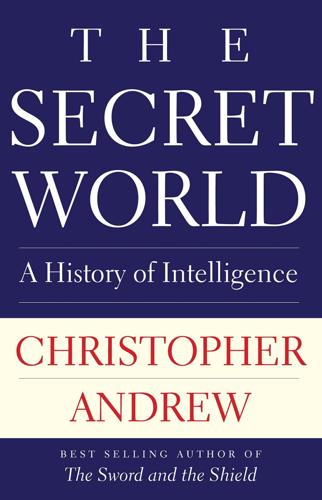
The Secret World: A History of Intelligence
by
Christopher Andrew
Published 27 Jun 2018
All Commission members knew, however, or should have known, of the KGB directives and other intelligence of major importance provided by the SIS agent Oleg Gordievsky during Operation RYAN and the ‘Able Archer’ crisis of 1983 (some of it published in 1990–91), for which he was personally congratulated by President Reagan in the Oval Office.46 They should equally have been aware that the best and most detailed intelligence on Soviet S&T operations in the United States had come from a DST agent in FCD Directorate T, Vladimir Vetrov (codenamed FAREWELL).47 The Commission might also have noticed that the secrecy of Gordievsky’s and Vetrov’s operations a decade earlier had been better protected by British and French intelligence, despite budget cuts, than those of American agents in the KGB had been safeguarded by US intelligence.
…
‘From “Upper Volta with Missiles” to “Nigeria with Snow”’. http://russialist.org/from-upper-volta-with-missiles-to-nigeria-with-snow/. 77. Andrew, ‘Intelligence in the Cold War’. 78. Andrew and Mitrokhin, Mitrokhin Archive, pp. 167–70, 280–87. 79. Hanson, Soviet Industrial Espionage. The documents and statistics supplied by the French agent in Directorate T, Vladimir Vetrov (codenamed FAREWELL), on which Hanson bases his analysis, complement the KGB files noted by Mitrokhin. On Vetrov, see also Kostin and Raynaud, Adieu Farewell; and Andrew and Gordievsky, Le KGB dans le monde, pp. 619–25. 80. Andrew and Gordievsky (eds.), Instructions from the Centre, pp. 37, 49–50. 81.
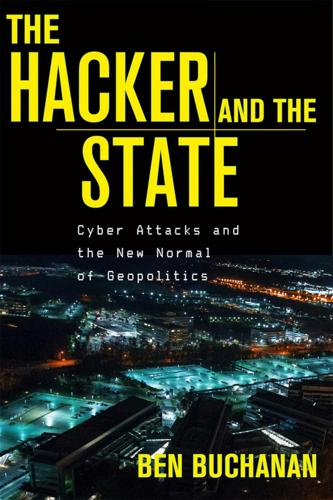
The Hacker and the State: Cyber Attacks and the New Normal of Geopolitics
by
Ben Buchanan
Published 25 Feb 2020
Hansen, “Soviet Deception in the Cuban Missile Crisis,” CIA: Studies in Intelligence 46, no. 1 (2002): 49–58. For more on how news of the missiles’ presence was dismissed by agency senior leaders, see Sean D. Naylor, “Operation Cobra: The Untold Story of How a CIA Officer Trained a Network of Agents Who Found the Soviet Missiles in Cuba,” Yahoo News, January 23, 2019. 12. Gus W. Weiss, “The Farewell Dossier: Duping the Soviets,” CIA: Studies in Intelligence 39, no. 5 (1996). Deception certainly cut the other way, too. It was not until after the Cold War ended that the United States realized that two members of its intelligence community, Robert Hanssen and Aldrich Ames, had independently sold reams of classified information to the Soviets, including information on which Soviet officers were American spies. 13.
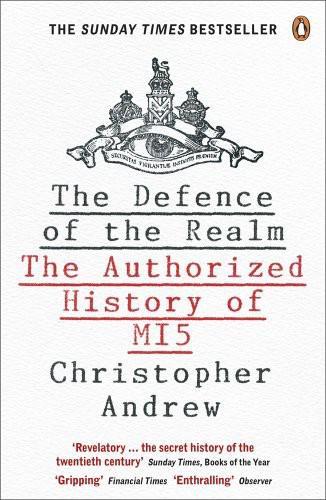
The Defence of the Realm
by
Christopher Andrew
Published 2 Aug 2010
On Gordievsky’s meetings with Margaret Thatcher, see Gordievsky, Next Stop Execution, pp. 368–72. 125 Security Service Archives. 126 Andrew and Mitrokhin, Mitrokhin Archive, pp. 548–53. 127 See above, pp. 583–5. 128 Security Service Archives. 129 During the early 1980s statistics on Soviet S&T were obtained by a French agent in FCD Directorate T, Vladimir Vetrov (codenamed FAREWELL). Hanson, Soviet Industrial Espionage. Andrew and Mitrokhin, Mitrokhin Archive, pp. 618–20. 130 Security Service Archives. 131 Security Service Archives. 132 Security Service Archives. 133 Security Service Archives. 134 Security Service Archives. 135 Security Service Archives. 136 Recollections of a former Security Service officer. 137 See above, pp. 583–5. 138 Recollections of a former Security Service officer.